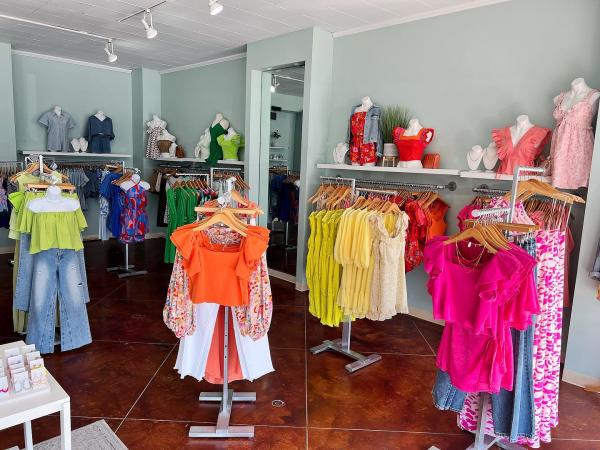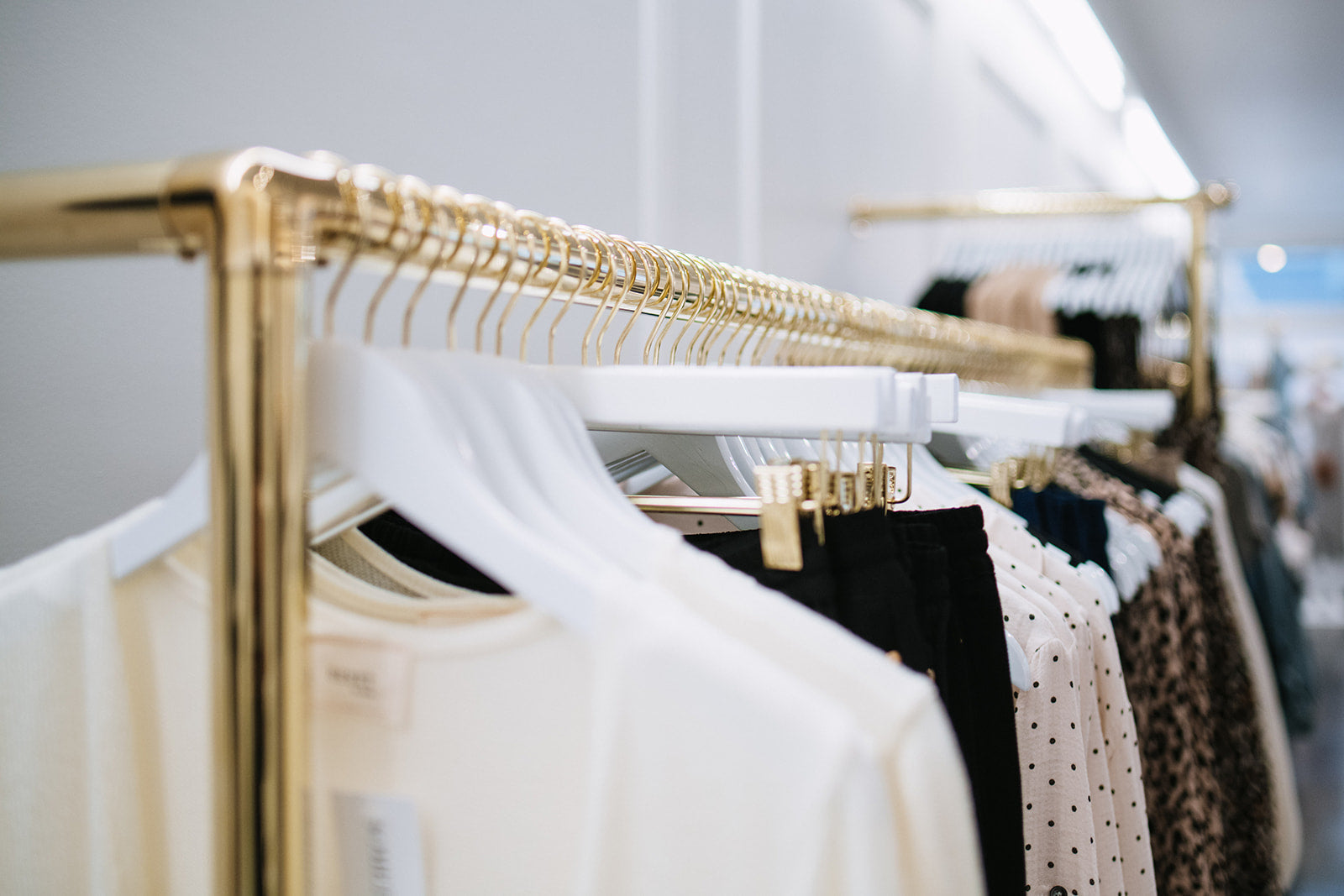Elevate Your Wardrobe with Spectacular Boutique Fashion Basics
Elevate Your Wardrobe with Spectacular Boutique Fashion Basics
Blog Article
Sustainable Fashion: Exactly How Eco-Friendly Clothes Is Shaping the Future of Style
As the fashion industry faces enhancing analysis over its ecological impact, the surge of sustainable fashion uses an appealing option that lines up design with eco-friendly obligation. Utilizing innovative materials such as plant-based textiles and recycled fibers, along with sophisticated approaches like digital and 3D printing, developers are redefining what it means to be classy in the modern age. Simultaneously, the growing popularity of upcycling and thrift society is fostering a shift towards a round economic climate. Yet, how does this activity really affect the future trajectory of style, and what obstacles exist in advance in its prevalent fostering?
Ingenious Sustainable Materials
As the garment industry faces its environmental influence, cutting-edge sustainable materials have actually emerged as a vital solution for lowering environmental footprints. Amongst one of the most promising products are those stemmed from all-natural, sustainable sources, such as organic cotton, hemp, and bamboo. These products not just lower reliance on nonrenewable fuel sources but also lessen harmful chemical use and water usage. Organic cotton, as an example, uses significantly less water than traditional cotton and removes the need for toxic chemicals, thereby protecting soil wellness and biodiversity.
In addition to plant-based materials, advancements in biofabrication have brought about the development of lab-grown textiles. Mycelium natural leather, stemmed from mushroom roots, presents a eco-friendly and versatile alternative to animal leather. Its manufacturing results in significantly lower carbon exhausts and water use, making it an extra sustainable choice for designer looking for to align with environmentally friendly techniques.
Recycled materials are additionally obtaining traction, with polyester made from recycled plastic bottles representing a considerable breakthrough. This advancement not only draws away plastic waste from seas and landfills yet also minimizes energy usage compared to creating virgin polyester. Together, these materials underscore the potential for a much more lasting garment industry, leading the way for eco conscious design and production.
Eco-Conscious Manufacturing
Building on the advancements in sustainable products, the fashion sector is likewise re-evaluating its manufacturing processes to even more minimize environmental influence. Secret approaches consist of reducing water intake, minimizing carbon exhausts, and eliminating hazardous chemicals. By embracing closed-loop systems, producers intend to recycle water and energy effectively, substantially lessening waste. The integration of eco-friendly power sources, such as solar and wind power, into manufacturing centers even more curtails dependence on nonrenewable fuel sources.
An additional important facet is the decrease of poisonous chemicals generally utilized in coloring and finishing textiles. Eco-conscious producers are moving in the direction of plant-based dyes and waterless dyeing modern technologies, which not just secure regional ecological communities but also enhance employee safety and security. Advancements like digital printing decrease textile waste and energy intake, supplying a cleaner option to conventional methods.
Furthermore, transparency and traceability have actually become extremely important. With the improvement of blockchain technology, business can currently supply in-depth understandings right into their supply chains, guaranteeing moral and eco-friendly practices at each step. This openness constructs customer trust and urges brand names to preserve high sustainability requirements. As the need for eco-conscious products grows, producers are forced to innovate, making sure that the future of style is both trendy and sustainable.
The Rise of Upcycling
Upcycling, a useful reference transformative method in sustainable style, entails artistically repurposing disposed of products right into new, top notch items. This cutting-edge method not just lowers waste but likewise lessens the need for basic materials, therefore decreasing the environmental influence of clothing production. By rebuilding and reimagining existing items, designers and fashion brands are able to instill originality right into their collections while promoting environmental obligation.

In addition, the upcycling activity has empowered independent designers and tiny organizations, that typically lead in technology as a result of their agility and creativity. By exploiting on the plentiful accessibility of unused materials, these entities add to a circular economy, showing that fashion can be both lasting and trendy. Through upcycling, the sector takes substantial strides towards a more mindful and accountable future.
Thrift Culture's Effect
The burgeoning second hand culture dramatically improves the landscape of lasting style, highlighting the relevance of mindful usage. This social change urges customers to accept secondhand clothing, thus lowering the demand for brand-new garment production and reducing ecological effect. Thrift shopping not only expands the lifecycle of garments but additionally reduces the carbon footprint connected with manufacturing, delivering, and throwing away clothing.
A key facet of second hand culture is its democratization of fashion. By supplying a large variety of styles from different periods at affordable prices, second hand shops make fashion accessible to a broader target market. This access cultivates a feeling of uniqueness and imagination, as customers mix and you could look here match special items to curate customized wardrobes without adding to the rapid fashion cycle.
In addition, thrift society advertises circularity in style, aligning with the principles of a circular economic situation. As more consumers and designers embrace thrift culture, the fashion industry is compelled to adjust, incorporating lasting practices to fulfill the growing need for eco-conscious choices.

Future Trends in vogue
Style's advancement is increasingly formed by sustainability-driven campaigns and technological advancements. One popular fad is the surge of digital fashion, where virtual garments can be used in enhanced reality atmospheres, considerably lowering material waste.
Moreover, the integration of blockchain technology uses brand-new opportunities in openness and traceability, enabling customers to confirm the sustainability credentials of their apparel. boutique fashion. This guarantees responsibility in supply chains and promotes honest sourcing practices. 3D printing is yet one more innovation that assures to reinvent making processes by making it possible for on-demand manufacturing, therefore reducing excess inventory and waste
In addition, the advancement of bio-fabricated products, such as lab-grown natural leather and plant-based textiles, provides sustainable options to standard products. These innovations minimize dependence on pet products and resource-intensive plants. As these modern technologies develop, they are positioned to change the fashion landscape, combining style with sustainability. The future of fashion, for that reason, exists in a smooth blend of technology, Discover More advancement, and eco-friendly responsibility.
Conclusion
The improvement of the fashion industry via lasting techniques indicates an essential shift towards environmental accountability. This evolution not only straightens fashion with environmental sustainability however likewise establishes a precedent for future trends focused on obligation and development.
As the style market deals with boosting analysis over its ecological impact, the increase of sustainable fashion supplies an appealing alternative that straightens design with environmental responsibility.As the style industry grapples with its ecological effect, cutting-edge lasting materials have arised as a vital remedy for minimizing environmental impacts. With each other, these materials emphasize the capacity for a more sustainable fashion market, paving the method for eco aware style and manufacturing.
Structure on the technologies in lasting materials, the fashion sector is likewise re-evaluating its manufacturing procedures to additionally minimize environmental effect. boutique fashion.Upcycling, a transformative method in lasting style, involves artistically repurposing disposed of products into brand-new, premium items
Report this page